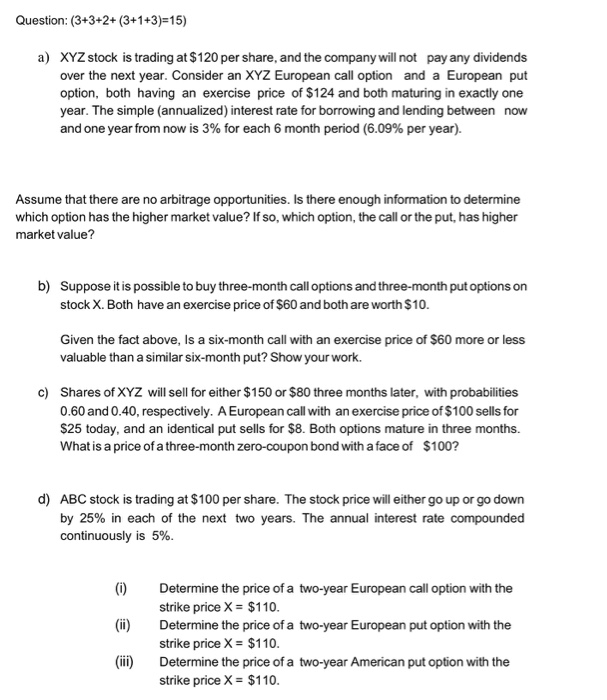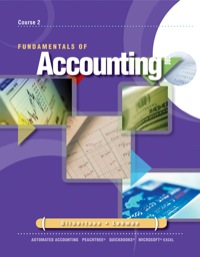Question: (3+3+2+(3+1+3)=15) a) XYZ stock is trading at $120 per share, and the company will not pay any dividends over the next year. Consider an XYZ European call option and a European put option, both having an exercise price of $124 and both maturing in exactly one year. The simple (annualized) interest rate for borrowing and lending between now and one year from now is 3% for each 6 month period (6.09% per year). Assume that there are no arbitrage opportunities. Is there enough information to determine which option has the higher market value? If so, which option, the call or the put, has higher market value? b) Suppose it is possible to buy three-month call options and three-month put options on stock X. Both have an exercise price of $60 and both are worth $10. Given the fact above, Is a six-month call with an exercise price of $60 more or less valuable than a similar six-month put? Show your work. c) Shares of XYZ will sell for either $150 or $80 three months later, with probabilities 0.60 and 0.40, respectively. A European call with an exercise price of $100 sells for $25 today, and an identical put sells for $8. Both options mature in three months. What is a price of a three-month zero-coupon bond with a face of $100? d) ABC stock is trading at $100 per share. The stock price will either go up or go down by 25% in each of the next two years. The annual interest rate compounded continuously is 5%. (1) (ii) Determine the price of a two-year European call option with the strike price X = $110. Determine the price of a two-year European put option with the strike price X = $110. Determine the price of a two-year American put option with the strike price X = $110. (iii) Question: (3+3+2+(3+1+3)=15) a) XYZ stock is trading at $120 per share, and the company will not pay any dividends over the next year. Consider an XYZ European call option and a European put option, both having an exercise price of $124 and both maturing in exactly one year. The simple (annualized) interest rate for borrowing and lending between now and one year from now is 3% for each 6 month period (6.09% per year). Assume that there are no arbitrage opportunities. Is there enough information to determine which option has the higher market value? If so, which option, the call or the put, has higher market value? b) Suppose it is possible to buy three-month call options and three-month put options on stock X. Both have an exercise price of $60 and both are worth $10. Given the fact above, Is a six-month call with an exercise price of $60 more or less valuable than a similar six-month put? Show your work. c) Shares of XYZ will sell for either $150 or $80 three months later, with probabilities 0.60 and 0.40, respectively. A European call with an exercise price of $100 sells for $25 today, and an identical put sells for $8. Both options mature in three months. What is a price of a three-month zero-coupon bond with a face of $100? d) ABC stock is trading at $100 per share. The stock price will either go up or go down by 25% in each of the next two years. The annual interest rate compounded continuously is 5%. (1) (ii) Determine the price of a two-year European call option with the strike price X = $110. Determine the price of a two-year European put option with the strike price X = $110. Determine the price of a two-year American put option with the strike price X = $110. (iii)







